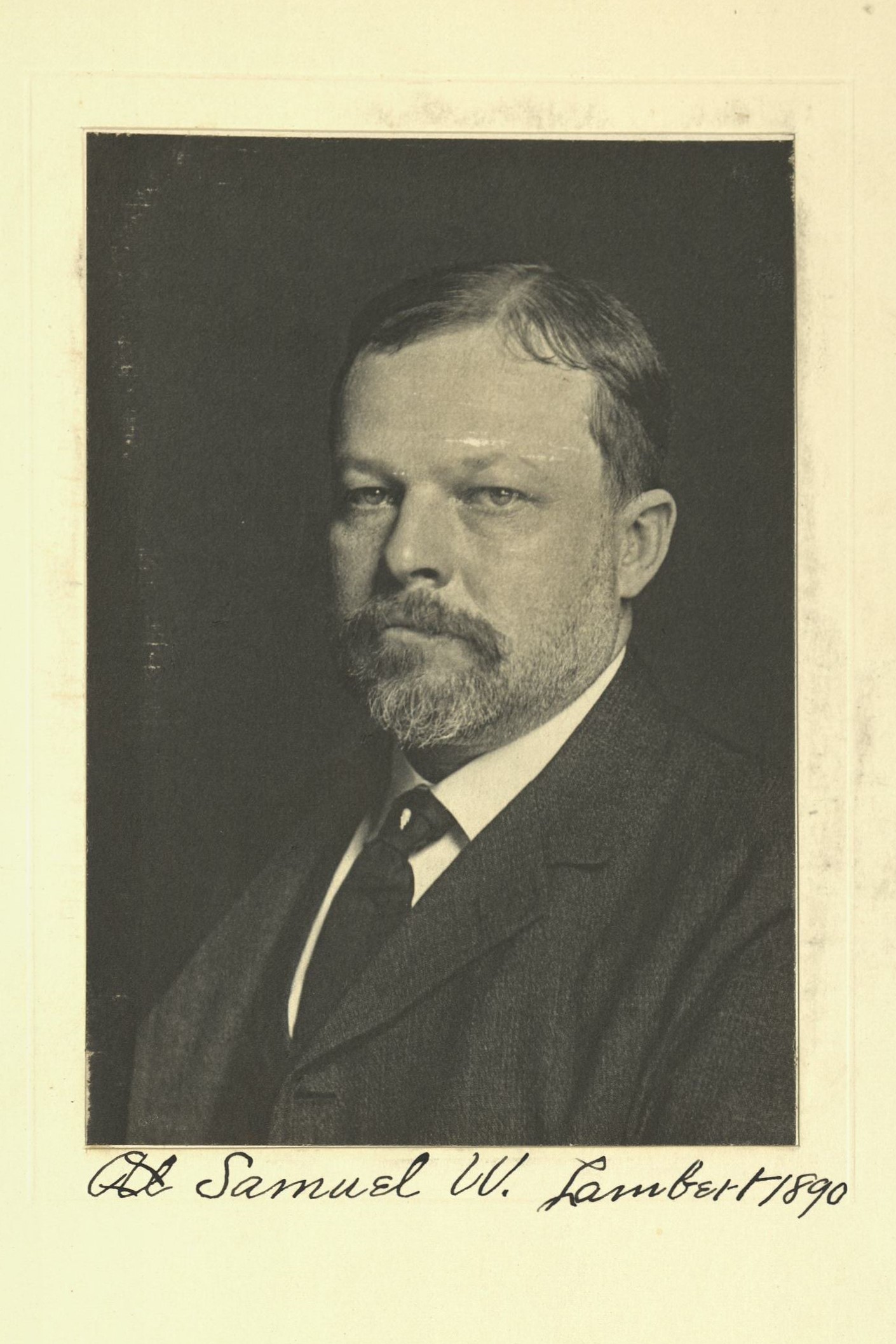Physician
Centurion, 1890–1942
Born 18 June 1859 in New York (Manhattan), New York
Died 9 February 1942 in New York (Manhattan), New York
Buried Westbury Friends Cemetery , Westbury, New York
, Westbury, New York
Proposed by Thomas M. Markoe, Robert H. Robertson, and George A. Peters
Elected 5 April 1890 at age thirty
Archivist’s Note: Son of Edward W. Lambert; brother of Adrian V. S. Lambert; father of Samuel Waldron Lambert Jr.
Proposer of:
- Pearce Bailey
- Charles Farnham Collins
- James Ewing
- Andrew Green Foord
- Frederic Grosvenor Goodridge
- James Raynor Hayden
- W. W. Herrick
- Christian A. Herter
- Robert Lewis
- Warfield T. Longcope
- G. A. MacCallum
- W. G. MacCallum
- Henry Stuart Patterson
- Hermann von W. Schulte
- Frederick Tilney
- John B. Walker
- William Robert Williams
- John Gilbert Winant
- Hans Zinsser
Seconder of:
Century Memorial
A newly elected non-resident member meeting Dr. Samuel W. Lambert anonymously at the Long Table would have appreciated at once that here was a major personality—winning, gay, forthright, picturesque in language, and interested in everything under the sun, especially books, fishing, and the human animal. During his nine years on the library committee of the New York Academy of Medicine—Lambert had served his term as president of the Academy—he developed the Rare Book Room and was largely responsible for the beautiful modern edition of Vesalius’s “Anatomy,” whose illustrations were made from the long-forgotten original wood blocks, which through his persistence were unearthed in Munich. He was very active in the Grolier Club, and his bibliophilic knowledge extended into much wider fields than those of medicine. Among his treasures was a notable collection of the various editions of Isaac [sic: Izaak] Walton’s “Compleat Angler.” So obvious was his delight in carrying off a prize—a bottle of Richebourg, Vieux Cépage, 1934—at a fish-story contest on a recent New Year’s Eve at the Century that even his defeated antagonists applauded with enthusiasm.
In the practice of medicine he was primarily a clinician, writes a Centurion medico. “During his earlier years he was active in the field of obstetrics, and from this basis developed a large and successful practice. Later he was a consultant, in which role his advice was widely sought and highly valued.” Another Centurion says: “When we doctors took sick, we wanted Sam to look after us, partly because of his enormous common sense. His active efforts in medical education were outstanding. He was also noted for his wide vocabulary, especially in the blue ranges, which he was able to make use of even in the presence of dainty ladies without their showing any reaction other than keen enjoyment. He never pulled his punches and was a valiant fighter against anything of which he disapproved. His brusqueness of manner did not disguise his deep sympathy with suffering and distress.” He conducted a “Sunday School Class” every Sunday morning at St. Luke’s Hospital. The institution became famous as a brilliant demonstration of the possibilities of bedside teaching. He was dean of the College of Physicians and Surgeons of Columbia University for fifteen years including the period of the amalgamation of the School with the Presbyterian Hospital, which culminated in the present great Medical Center for teaching, research, and the care of the sick. His successor as dean “found him always encouraging, and helpful with advice. Although he did not agree with all our policies, he was big-minded enough to help us carry out our own ideas.”
Geoffrey Parsons
1942 Century Memorials

